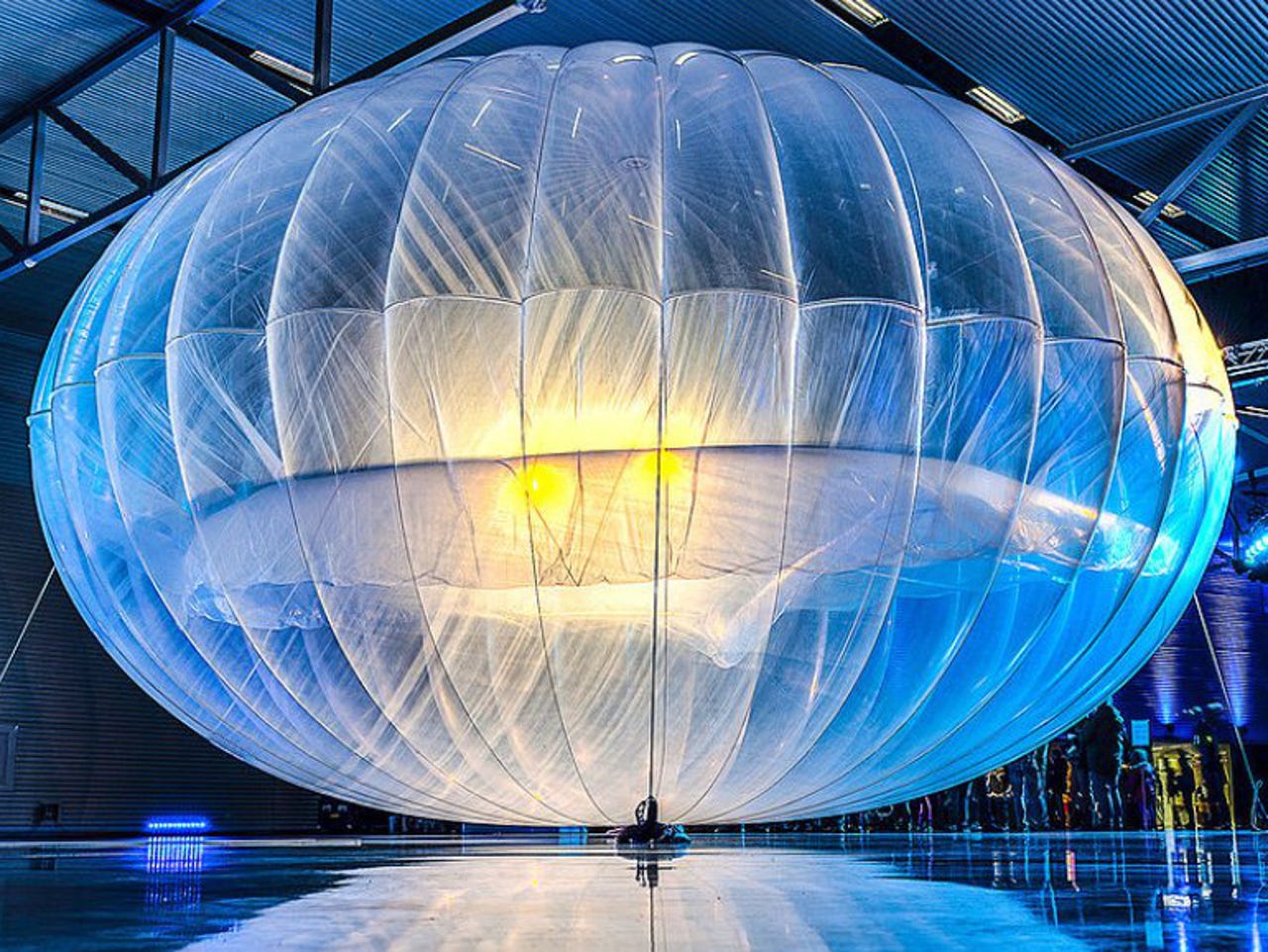Google X lab: We're making something that defies gravity


The new material comes from the same Google X stable that produced the Loon balloon beamed-internet project, seen here at launch.
The Google X secret research lab may soon reveal a new super-strong, gravity-defying material that its chief thinks could change the world.
Google could be about to outshine Boeing's bone-inspired micro-lattice, recently touted as the "world's lightest material", which is strong yet can balance on a dandelion fluff ball without breaking the seed stems.
Boeing's metal creation is light but still falls to earth when dropped. Not so Google's new secret moonshot, according to head of X, Astro Teller, who says its material "wants to float".
"It could change how we interact with the sky, buildings, transportation, and more," Teller said in a post on Backchannel discussing some of the projects it's killed and others that have survived, such as its Loon balloon beamed-internet project.
The mystery material was a "phoenix from the ashes" of a proposed project to build a cargo ship that was lighter than air. Google believed it could bring the cost of air-freight closer to the cost of shipping by sea, with a lower carbon footprint than boats yet faster than sea transit.
Teller said the project was killed because the $200m in R&D and materials required for an initial trial was too great.
"Since X is structured around tight feedback loops of making mistakes, learning, and new designs, $200m is way too expensive for us to get the first data point on whether we're on the right track. If a project has an Achilles heel, we want to know up front, not way down the road. So we killed this project," he said.
Google in February reported that its 'other bets', which include X projects such as Loon, as well as Google Fiber, accounted for about 10 percent of its total $8.8bn in capital spending last year.
Another project X killed was an automated vertical farming system that enables crops to be grown closer to the consumer, cutting out the need for transport. The system was water efficient but couldn't support staple crops such as rice and grains, and so it was terminated.
Teller also defended the company's choice of creating an autonomous car without a steering wheel. California last year said Google's car must have a steering wheel so the driver can take physical control when needed.
But, according to Teller, Google discovered that having a steering wheel available when the car was doing most of the driving was actually unsafe.
"People didn't do their part, staying alert in case the car needed to hand control back to them," he wrote.
"Aim for a car where you're truly a passenger. You tell the car where you want to go, push a button, and it takes you from point A to point B. By itself. This is how we could transform mobility."
Project Loon appears to have successfully run the gauntlet with promising negotiations with carriers in Indonesia and a new trial beginning this week in Sri Lanka, where the government has taken a 25 percent stake in a joint venture with Google in exchange for spectrum for the trial.
According to Teller, Loon was "perhaps the craziest-sounding" project of all, and could have faced an early death if Google couldn't figure out how to guide the balloons through the sky.
"These days, with our latest balloon, here, we can navigate a two-mile vertical stretch of sky and sail a balloon to within 500m of where we want it to go from 20,000km away," he said.
Teller added that Loon balloons will be flying over Indonesia and other locations for "real service testing" this year.
More on Google
- Google's TensorFlow Serving goes open source for large scale machine learning model creation
- Patch Linux now, Google, Red Hat warn, over critical glibc bug
- Alphabet renames Google Ideas to 'Jigsaw', will focus on world policy
- Google closing Google Play for Education to focus on Chromebooks in schools
- Samsung Chromebook 3 now available: Best $200 Chromebook
- Google's Project Loon: Now its internet-beaming balloon tests take off in Sri Lanka
- Samsung starts Android Marshmallow rollout for Galaxy S6, S6 Edge